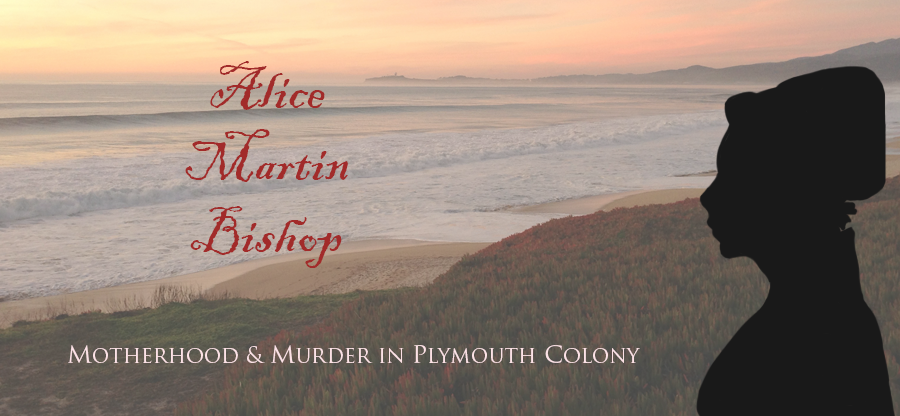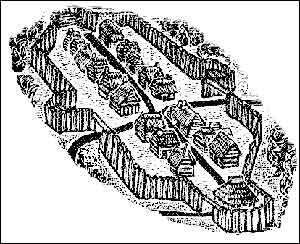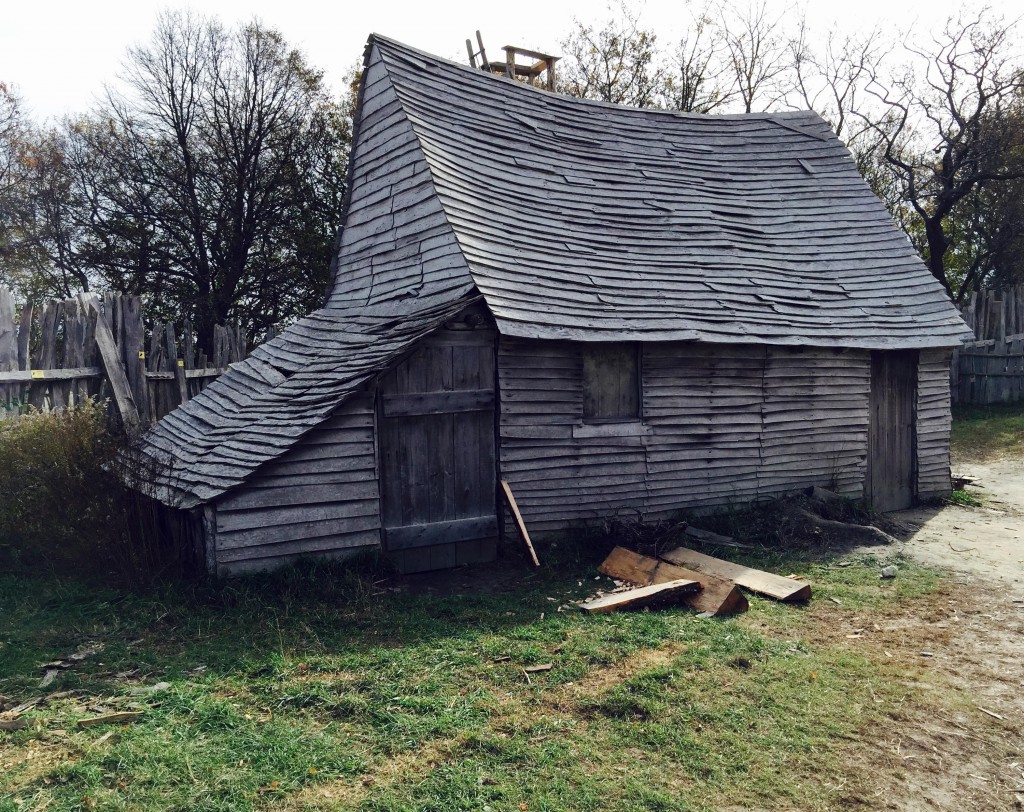Erin Taylor, March 2015
There is no grave marker for Alice Martin Bishop, nor her three daughters. We can’t tell you where George Clarke or Richard Bishop is buried — not the town or cemetery. Matter of fact, given her crime, Alice may be buried in an unmarked grave far from her family and neighbors.
During our 2014 trip to Massachusetts, I think Kristin and I were moved most by the graveyards, knowing these spaces were the closest we would ever get to our ancestors. Together, we visited the Witch Trials Memorial and The Burying Point Cemetery in Salem, Cove Burying Ground at Eastham, Cobb’s Hill Cemetery in Barnstable (at the First Unitarian Church) and Burial Hill in Plymouth. Kristin also took the opportunity to visit the graves of Abigail Adams and John Winthrop while she was in Massachusetts.
Legible headstones before 1700 are rare. The earliest grave markers were made of wood and have, naturally, not survived. As stone cutters came to the colonies, their work included memorials, but many of these have faded or crumbled thanks to erosion, lichen, vandals, and robbers.
Yes, vandals and robbers. For decades now, some of our oldest cemeteries’ gravestones have been stolen, defaced, and used as lawn chairs and ashtrays. Charming, America.



